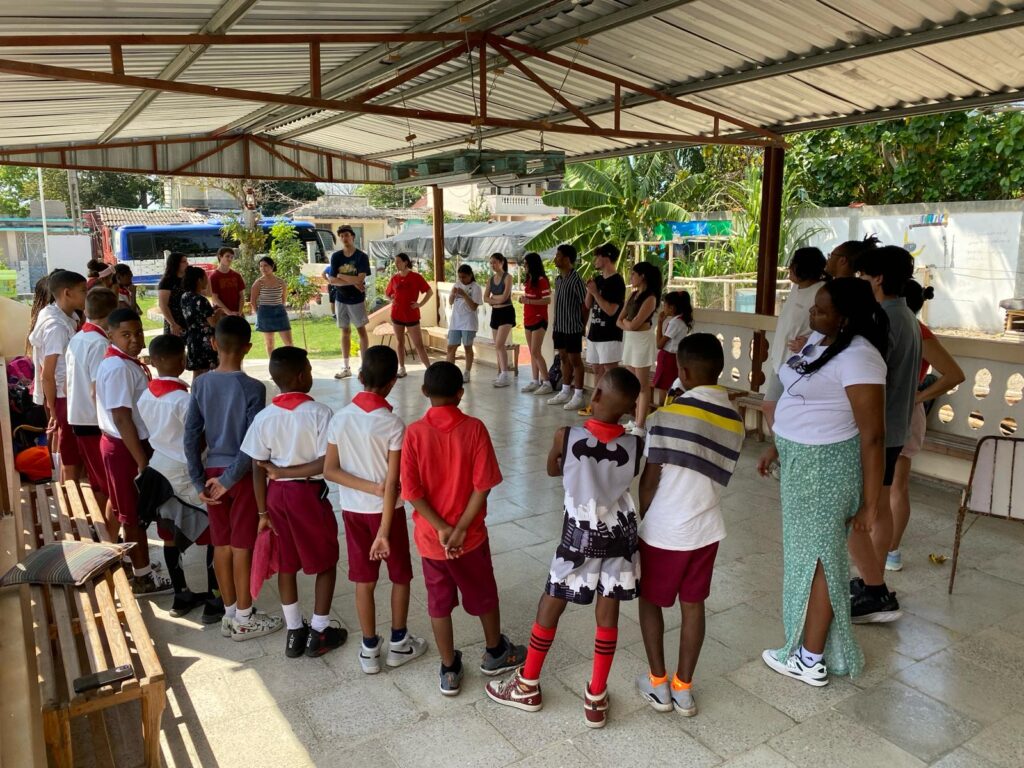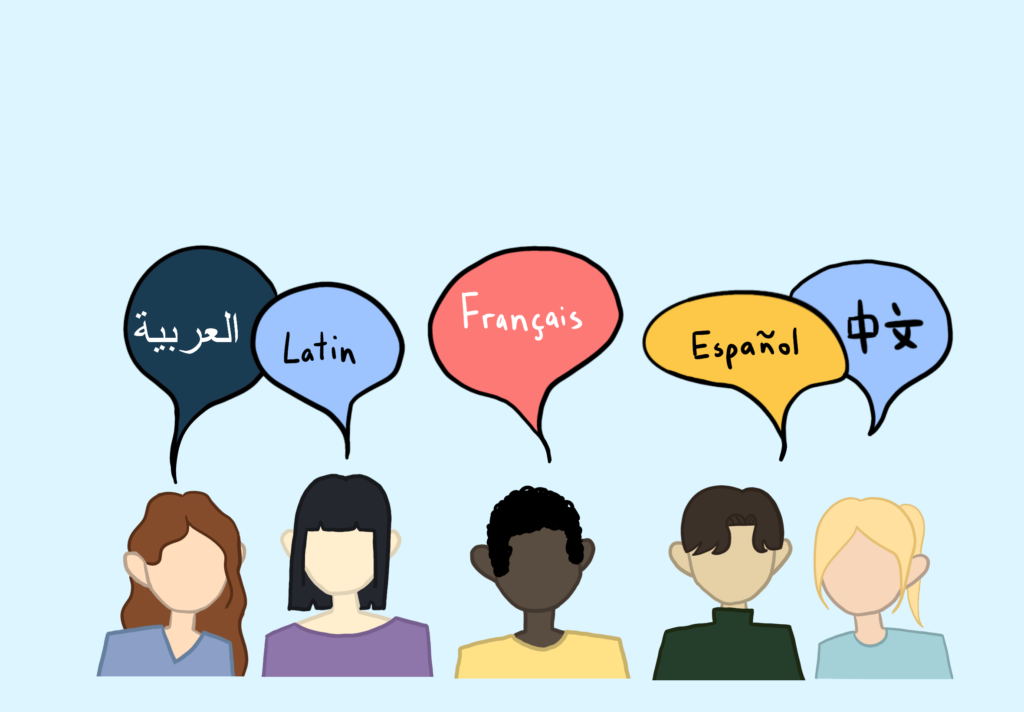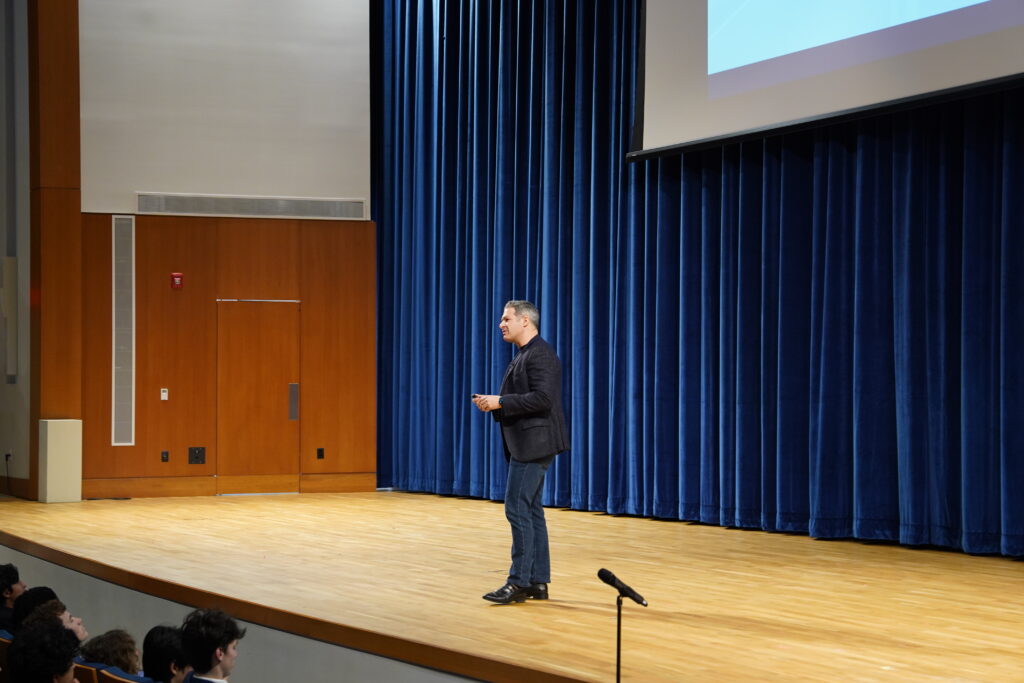
Photo courtesy of @gochoate on Instagram
Choate students visit an elementary school in Cuba.
By Aiden Kuo ’27
Over spring break, several Choate students and faculty members visited Cuba, Arizona, and South Africa to learn about diverse histories, cultures, and societies. Traveling across the globe, the trips provided students with eye-opening experiences that changed their perspective on various global issues. While participating in different activities, students also had the opportunity to meet local residents and bond with their peers.
Border Studies in Amazon
From March 1–8, students traveled to Tuscon, Arizona with Biology teacher Mr. Chris Aguiar and Spanish teacher Dr. Maria Ghiggia. In collaboration with BorderLinks — a non-profit offering experiential learning opportunities that explore the difficulties of migration along the Southern border — the trip was planned to give students the unique opportunity to deepen their understanding of the current situation at the United States-Mexico border.
Students worked with numerous organizations to help immigrants on a variety of issues from legal aid to medical assistance. They viewed documentaries highlighting different stakeholders and groups involved at the border and participated in workshops to simulate dealing with fictional situations.
By speaking with both people directly affected by migration and advocates for migrant justice, the students were able to learn a lot. “I hope students took away how powerful their stories are and have an appreciation for the privileges and luxuries that we have here,” Mr. Aguiar said.
For Rodrigo Chon Him ’25, one of the most impactful activities the group participated in was hiking through the same desert immigrants pass through when crossing from Mexico to Arizona. Chon Him described the experience as “humbling” and also “very sad [when] you put yourself in their position. You can imagine kids wandering around for days, maybe even weeks.”
The trip also allowed Chon Him to reflect on his own family and opened his eyes to his privileges. “As someone who comes from a Hispanic family, my ancestors immigrated to the United States. Thankfully, I didn’t have to go through the same process as them and was able to come to America legally,” Chon Him said. “Seeing and understanding the different struggles and adversities these families faced but still managed to have a smile on their faces made me realize how I sometimes don’t appreciate things enough.”
Students on the trip were left with a new perspective and understanding of the border crisis. “[When] we went to Nogales, Arizona, to the wall, we could actually see across — you could stick your hand through — and there was a school right there with children outside playing … the border literally separates two communities,” Thandiwe Taylor ’26 said. “People say that this is the most dangerous border crossing, but I just think that showed to me how much they criminalize the migrants who are crossing … They really have a misconstrued narrative here and being there really opened up my eyes.”
Art, History, and Mystery in Cuba
In partnership with Spanish Studies Abroad and chaperoned by Director of Faculty Development and Arts teacher Dr. Jessica Cuni, Fifth-form Dean and History Teacher Dr. Yaser Robles, and History teacher Ms. Abby Kandel, the trip to Cuba lasted from March 1–9. Students experienced Cuba’s art, culture, and history firsthand through activities like salsa dancing and a cooking workshop, as well as visits to Old Havana, the Centro Fidel Castro museum, the José Martí Memorial, and other locations.
“We talked a lot about the [Cuban] revolution and how art was reflected during that time,” Suleika Sandi ’26 said. “In U.S. history, Cuba was kind of demonized. We hear a lot about communism and we hear about the Cuban Missile Crisis, but over there, it’s kind of the opposite. They saw everybody as people and they just wanted us to know that too.”
Malcolm Mahaney ’25 specifically enjoyed the diverse music they listened to during a music workshop and a salsa class. “Not all the best music in the world you can find on Spotify,” he said. Sandi added, “We saw a lot of live performances in restaurants. We learned a lot about Cuban music and how it relates to different types of music, like R&B, hip-hop, and reggaetón.”
In addition, the group interacted with local residents during visits to an elementary school and an art high school. “It was a super fun experience just to sit down and interact with kids from another part of the world,” Zoie Wang ’26 said. Sandi added, “[At the high school], we were asking about their lives and I realized it’s not much different from ours, but their school system is very different … They don’t have a lot of the same access that we do in terms of materials, but their quality of education, whether it’s public or specialized, is still really high.”
Student interactions with locals served as invaluable opportunities to learn about their daily lives and Cuba’s rich culture and history. “When I first came to Cuba, I thought a lot of it was going to be serious conversations … However, I honestly learned the most through having regular everyday conversations with the people there,” Sandi said.
Public Health in South Africa
From March 1-10, in collaboration with the Council on International Educational Exchange, Biology teacher Dr. Selena Gell and Director of Counseling Ms. Raynetta Gibbs chaperoned students on a trip to Cape Town, South Africa. Throughout the trip, students learned about public health and wellness and were exposed to the raw experiences faced by locals. Students visited various communities, like Bo-Kaap, !Khwa ttu, and Langa, and participated in several activities, like cooking samosas, volunteering at an elementary school, and hiking to forage for a meal.
The starkly visible wealth inequality stood out to many students. Visiting Langa, a township in South Africa, students were able to see the direct impacts of Apartheid. “I remember seeing photos that showed the wealth inequality, but seeing one side of the highway flourishing and the other side almost barren, was kind of bizarre,” Vivi Jenkins ’26 said.
Among the students, one particularly memorable experience was their volunteer work with Greenpop, where they planted indigenous plants at a local elementary school. They learned more about the native ecosystems and dug deeper into the cross-section of public health and urban greening. “We learned about the importance of urban greening in an environment and the need to restore greenery in more barren areas,” Nicole Pelski ’26 said.
Overall, students found this year’s spring break trips to be fulfilling, and the opportunity to travel abroad helped many to learn about different cultures and pique their curiosity about their histories. From the borders of Arizona, to the art museums of Cuba, to the coastlines of South Africa, these Choate students were involved in a once-in-a-lifetime experience.




